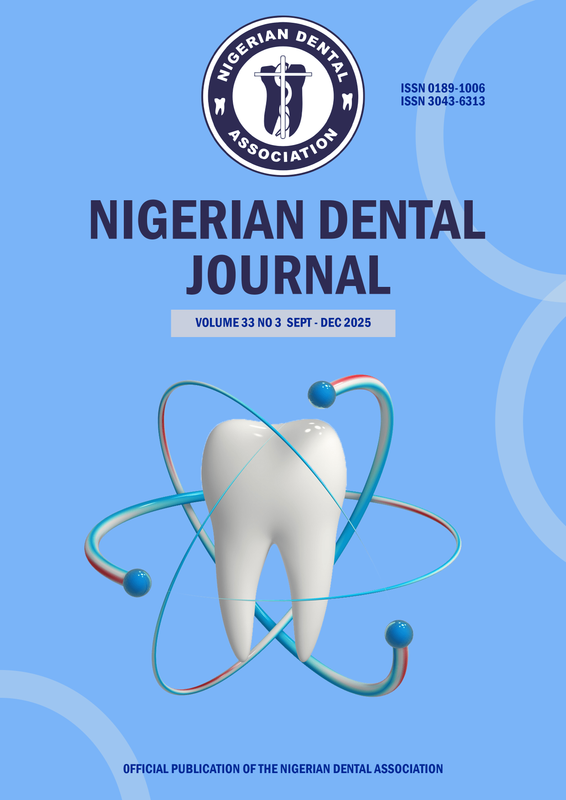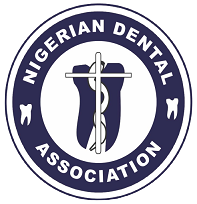The associations of malaria parasite and ABO blood groups with aggressive periodontitis in Nigerians - a preliminary study
DOI:
https://doi.org/10.61172/ndj.v19i2.128Keywords:
Aggressive periodontitis, Malaria parasite, ABO blood group, ControlsAbstract
Objective: Aggressive Periodontitis (AgP) is a rare form of periodontitis which has been associated with aetiological factors including genetic predisposition, Aggregatibacter actinomycetemcomitans, and blood group B. It seems to have a racial predisposition being more common among blacks, particularly people of West African origin. The role of endemic factors such as malaria is yet to be investigated in AgP. The aim of this study was to explore the associations of malaria parasites and ABO blood groups with aggressive periodontitis.
Method: A preliminary case-control study on localized aggressive periodontitis patients and age and gender matched controls. Microbiological and hematological tests were performed to determine the presence of malaria parasites and ABO blood groups respectively.
Result: Eight LAgP patients and 9 age and gender-matched controls were seen. Six patients were positive for Plasmodium Falciparum malaria parasite, compared with 2 controls. This difference was statistically significant (p=0.044). The prevalence of malaria infection was not significantly associated with age (p = 0.44) or gender (p = 0.34) of the subjects.
Conclusion: This preliminary study showed a high prevalence of malaria parasites among patients with aggressive periodontitis. Malaria infection may be associated with AgP. Studies with larger sample sizes may be needed to further investigate the relationship between aggressive periodontitis and malaria infection.
Downloads
Published
Issue
Section
License
Copyright (c) 2011 K. O. Savage, P. O. Ayanbadejo, K. A. Umeizudike, G. O. Alade, O. A. Campbell

This work is licensed under a Creative Commons Attribution 4.0 International License.
Open Access Statement
- We became fully Open Access since January 2023.
- Our new and archived materials are available free of charge on open basis and under a Creative Commons license as stated below.
Copyright statement
Copyright © 1999 The authors. This work, Nigerian Dental Journal by Nigerian Dental Association is licensed under Creative Commons Attribution 4.0 International License.

